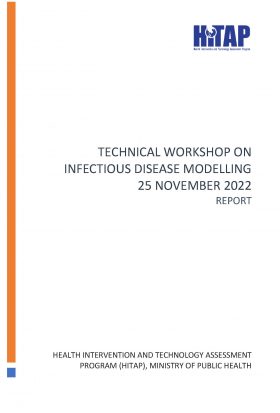This website uses cookies so that we can provide you with the best user experience possible. Cookie information is stored in your browser and performs functions such as recognising you when you return to our website and helping our team to understand which sections of the website you find most interesting and useful.
Mission Report: Technical Workshop on Infectious Disease Modelling

Details
Infectious disease models can be used to forecast future outbreaks and estimate the impact of interventions to support policy. Although infectious disease modelling is a well-established method, it has recently gained prominence during the COVID-19 pandemic as an important tool to support decision-making. Most COVID-19 transmission models were initially developed for high-income settings, such as the United Kingdom (UK) and the United States (US) and were later adopted for use in low- and middle-income countries (LMICs). Without local technical capacity and an understanding of setting-specific contexts, models may produce inaccurate and non-robust results. Improving technical capacity for conducting infectious disease modelling remains a priority as part of the pandemic preparedness agenda for all countries.
The Health Intervention and Technology Assessment Program (HITAP) is a research unit in the Thai Ministry of Public Health and supports use of evidence for health policy. It has been collaborating with the London School of Hygiene and Tropical Medicine (LSHTM) to build capacity on infectious disease modelling and, in an effort to address the gap in capacity for infectious disease modelling in Thailand, hosted an introductory workshop.
———-
[Press Release] Building Stronger Pandemic Preparedness with Infectious Disease Modelling




